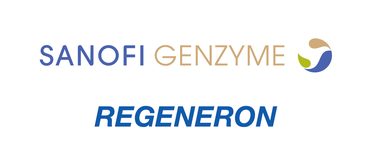Exclusive: Global Report Identifies Strategies for Improved Quality of Care in AD

Debuting at EADV, unique global initiative focuses on best practices.
Gathering and synthesizing data from in-person visits from 32 care centers in 17 countries around the world, the “Improving Quality of Care in AD” report offers clear recommendations to improve care and help patients better manage atopic dermatitis.Commissioned and funded by Sanofi Genzyme & Regeneron, the report was completed by KPMG LLP and is available for download at atopicdermatitiscare.kpmg.co.uk.
Eric Simpson, MD, Professor of Dermatology and Director of Clinical Research at Oregon Health and Science University, helped develop the report. He notes that, analogous to a systematic review of the literature, “It's really a systematic review of centers and a systematic review of best practices.”
He emphasizes the global nature of the report. “Being able to put all those approaches into one document and look for common themes is extremely powerful. Then someone like me out in the middle of nowhere can access this document…and say, ‘Okay, here's the steps I can do to improve my patient care with patients with this chronic disease,’” Dr. Simpson says.
The report identifies challenges but is largely focused on solutions. “One of the top challenges that was pretty much universal was patient understanding of the disease—it's education,” Dr. Simpson observes. Atopic dermatitis is a complex, chronic disease that is not fully understood by doctors. “Trying to package that into a way for patients to understand, it's quite difficult,” he says.
One identified best practice in eczema care is increased utilization of patient reported outcomes (PROs). “You can only get so much by your examination of the skin. You don't really know how it's impacting a patient in terms of symptoms unless you spend some time or utilize PROs. Actually PROs can save you time in your clinic,” Dr. Simpson suggests.
“That's another thing I like about this initiative is that some of these steps that you can take have different levels of difficulty. You can pick the easy ones that you could do quickly—you could do this in a 10-minute visit with your patient—or you can make big structural changes to your clinic to see the most severe patients and provide the most optimal care.”
Benefits of implementing strategies may extend beyond improved patient outcomes, Dr. Simpson suggests. “Time is an issue, then implementing some of these structural changes will be a challenge but will really improve your care and I would argue that some of them will increase your efficiency,” he says. “I think you can improve care, become more efficient and have more gratification out of your job.”
The full report is available online.

Facebook Comments